
The 2020 holiday season is expecting to be the most challenging in recent history.
During the spring and summer, COVID-19 forced many businesses to pivot and offer online shopping options as a way to survive during lockdowns. Grocery delivery and takeout options saw tremendous growth, while other businesses filed bankruptcy.
After such an unprecedented year, one thing is certain: this holiday season shoppers will be thinking – and buying – with a digital-first mindset.
Related article: Tips to Plan Your Holiday Marketing For The Most Challenging Holiday Season In Recent History
Research from Salesforce indicated that half of Americans expect to spend the same or more during the holidays this year.
Wondering what factors will influence the decision to spend? According to Facebook, price is at the top, followed by the buying experience, from product availability to shipping.
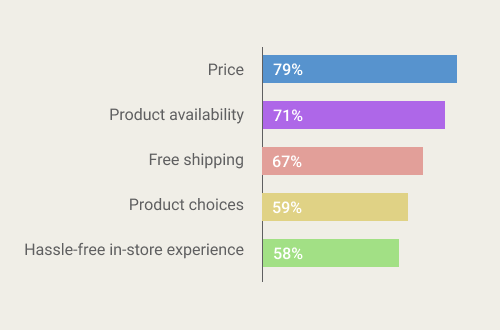
Crucial to success this year will be an easy, seamless purchase experience that functions across channels and offers flexible options to customers.
To make sure that your brand will offer first class experience, now is the best time to implement the right solutions and best practices to cope with the seasonal increase.
When you’re in the middle of the busiest shopping season of the year, the last thing you want is to discover a problem with your ecommerce website or an inefficiency in the checkout process. Eliminating any unnecessary steps or anything else that slows down the process, or offers opportunities for errors need to be your priority right now.
You also need to make sure your team is fully prepared and trained up on any new processes or tools you’ve added.
2020 Ecommerce Website Holiday Checklist:
To have a successful holiday season, your ecommerce store should have a solid infrastructure, top performance, and, of course, an optimized customer experience.
Is your online store ready to deliver?
Let’s take a look at some of the crucial ways you can update your site to meet — and exceed — customer expectations before the holiday season:
Prepare for massive surges in digital activity
An unprecedented 30% of global retail sales will be made through digital channels in the 2020 holiday season (Salesforce). That means you need to conduct load testing to check your ecommerce capabilities and prepare for massive surges in digital activity.
The top threats to website performance for online retailers include slow third-party components, poorly performing APIs, and overwhelmed servers.
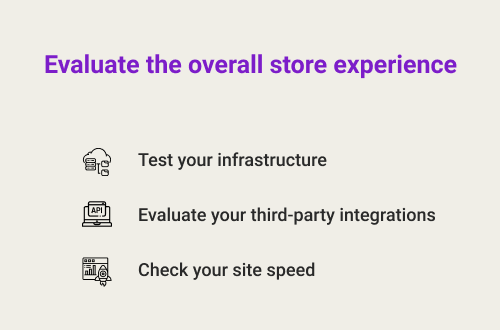
Check your infrastructure. Higher website traffic can be great for your bottom line, but it can also put an extra burden on the underlying technology of your website, which can cause interruptions and slowdowns and result in poor user experience.
Do a round of load testing to ensure servers can handle increases in traffic and transactions.
Evaluate your third-party integrations. Take a look at your third-party integrations. Are they up-to-date? Test them, make sure they can handle the load, and don’t add new ones just before the start of the shopping season.
Streamline your pages. While some website performance issues are due to third-party issues, website speed is within your control. Users expect your web pages to load in 2 seconds or less – if they take longer, your conversions and sales will suffer. Speed up your website by compressing images and text, limiting elements on the page, and being selective about plug-ins.
We at AirDesigns can help you perform load testing to determine visit numbers and traffic patterns. We will also help with all the technical aspects of your ecommerce to make sure everything is working smoothly.
Offer shipment tracking
The delivery tracking system is an essential part of the ecommerce process and customer experience. If you do not have one, it’s high time to consider adding this option to your online store.
Not only does this make it easier for your customers to keep track of their purchases, but it can also prevent two types of criminal activity—online fraud when people claim they have never received the package, and the actual physical theft of packages from the purchaser’s doorstep.
Removed unnecessary steps from the purchase process
As you work to simplify conversion paths, make sure to remove unnecessary steps from the purchase process. This way you will bring new customers to the table and make a purchase.
There are various tools and plugins available in the market which not only simplifies the checkout process but reduces the overall shopping cart abandonment rate of your website. What can you do?
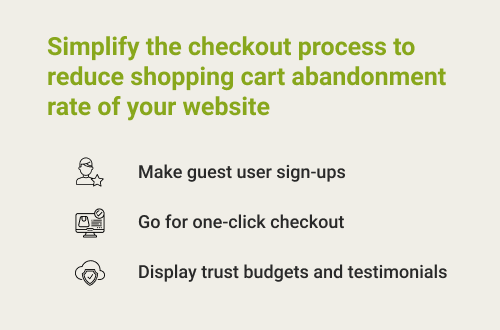
- Don’t let your customers feel distracted by information not related to the purchasing process itself.
- Display trust signals, with custom trust badges, testimonials, happy customers.
- Go for one-click checkout.
- Avoid shopping cart abandonment by making guest user sign-ups compulsory.
New Purchase Options
A huge portion of abandoned carts come from customers not being able to use their preferred payment method when shopping online.
When it comes to payment options, the more you offer to your customers, the less likely to lose an order. New payment technologies that help streamline the process or allow users to pay in installments are increasingly popular. Consider testing:
- simple purchase solutions like Apple Pay or Amazon Pay, particularly on mobile
- installment payment options like AfterPay or Klarna
And one more thing: buyers want to feel secure and protected while leaving their credit cards, so using a payment gateway they recognize will put them at ease.
Strengthen your customer service process
Selling tons of products is great, but handling complaints, questions, and returns is a huge burden for every business. Do you have a process in place to handle any questions and concerns, and make information readily available?
Having dedicated support for phone, email, and social media to respond to inquiries quickly is a must. Even when something goes wrong, a positive customer support experience can influence the buying decisions and make loyal customers. Make sure to respond in less than 24 hours.
To free up your time and resources, you want to make it easy for customers to find answers on their own. Use tools like chatbots, knowledge bases and frequently-asked-questions (FAQ) pages.
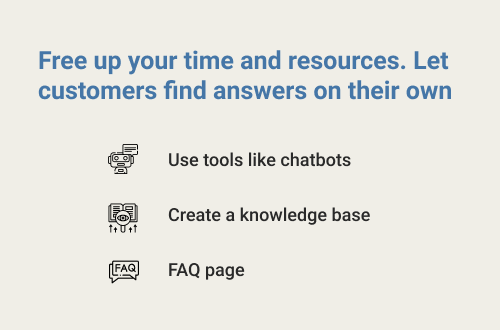
If you don’t want to hire additional staff, then turn to chatbots.
To enhance the customer experience, consider adding chat support powered by solutions such as Drift or iAdvize.
Analyze your current conversion flows
After getting people from a social media channel, search engine results page, or display ad to your online store, you need to turn them into customers.
There are many ways the purchase decision can go awry, and prevent your visitors from buying. This holiday season, there are more stresses on your customers than ever, so it’s imperative to make conversions as easy as possible for the customer.
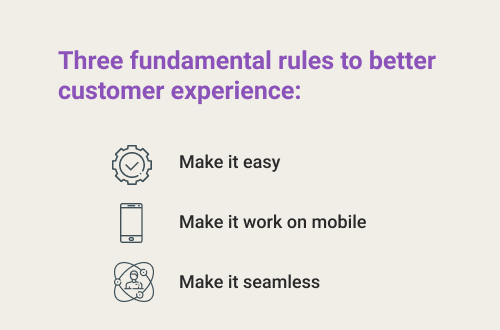
Analyze your current conversion flows on the website, especially if you’ve already been dealing with a surge in ecommerce transactions this year. You need to be conducting A/B & multivariate tests to understand what’s driving conversion and what’s hindering potential purchases.
Look at top site landing pages, top exit pages, and heatmap reports to identify top performers and how to make them even more effective while allocating spend to those pages, then dig into how you can apply that knowledge to pages that are underperforming.
Ensure Mobile friendly Experience
Mobile commerce is on the rise, with more and more people using their mobile devices to make purchases rather than desktop computers or the phone.
According to Facebook, the majority of holiday shoppers who buy on mobile have experienced friction. That’s why it’s important to ensure that customers are landing on mobile-friendly landing pages. Test mobile site speed and UX and make sure they will meet customers’ expectations.
Offer the option to buy online, pick up in-store (BOPIS)
If you’re selling in a brick-and-mortar store, offering the option to buy online, pick up in-store (BOPIS) will be vital. BOPIS is a great option for shoppers who prefer to browse online, but also want the items in their possession on the same day.
This method allows retailers to blend the online and in-store experience to engage with customers while still offering a more convenient way to shop.
In fact, according to a recent study by Adobe:
- BOPIS increased by 195% YOY in May due to the pandemic.
- BOPIS is becoming the delivery method of choice for consumers.
- Shopping trends adopted during the pandemic are likely to become permanent.
This holiday season, retailers can enable BOPIS to eliminate the pains of shipping and processing while delivering a convenient and safe shopping experience.
Social selling is booming
SOCIAL SELLING has become the fastest-growing segment of selling inventory.
Salesforce predicts that 10% of mobile orders will be through social channels, so you need to be running test campaigns. If you’ve set up direct purchasing on social media channels, for example, start testing messaging and creative on your key audiences.
Make sure your ecommerce platform gets 24/7 support.
Avoid holiday nightmares like a crashed website on Cyber Week, or customers complain that something doesn’t work on your website.
After months of hard work, you don’t want your customers to be disappointed and unable to make purchases. It’s often overlooked, but support for your business is make or break for success.
Now is the time to make sure your business has a dedicated support team behind your store.
Our expert team can help you with anything related to selling online and growing your business, like boosting conversion, improving your shopping experience, recommending solutions for taxes, payments, shipping, and software integrations.
We also stand out from the crowd with ongoing content resources, like our Ecommerce Empire series, and our offering of growth and launch services where you will work with a dedicated ecommerce expert to help you plan for success.
Write us at info@airdesigns.us or set a quick call with us to to discuss your most urgent needs for the holiday season.


